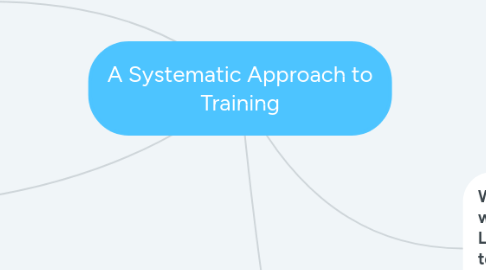
1. Training and Development Phase
1.1. Choosing a training environment
1.1.1. A training environment must be appropriate for the training to be effective. So, job tasks and KSAs must be considered. For example, if a pilot is being trained, they should probably do a flight simulator instead of a being in a pool.
1.2. Learning Principles
1.2.1. The proper learning variable or level of that variable should be carefully selected
1.3. Trainee Characteristics
1.3.1. Trainee characteristics can be used to predict learning and motivation.
1.4. Contextual Factor
1.4.1. Organizations need to support employee training.
2. Evaluation Phase
2.1. Need to know if training worked, so you ask about training validity, transfer validity, intraorganizational validity, and interorganizational validity.
3. Workplace training is systematic, which means intentional. Learning and development need to be an outcome. Training should enhance work team and organizational effectiveness.
3.1. instructional technology: systematic development of programs in training and education
3.1.1. systems approach emphasizes specific instrumental objectives, controlled learning experiences, criteria for performance, evaluative information, ongoing feedback, a training medium that mimics the environment it is intended for, a schedule, and considers organizational politics
4. Assessment Phase
4.1. assessment of training needs
4.1.1. Before anything, a requirements analysis can be used to see what kind of data can be collected and from whom for a needs assessment. The requirements analysis needs to answer what job is being examined, who can we ask about the job, what is the target job, etc...?
4.1.1.1. Then a needs assessment can be used to see what kind of training is needed. Then the organization is analyzed to know about people and human resource issues (e.g., the supply of people, the pieces of the organization's ASA model, and the organization's competitive edge). Then a person analysis is done using criteria of job performance.
4.2. deriving instructional objectives
4.2.1. These seek to understand tasks and environment needed to do a job effectively.

